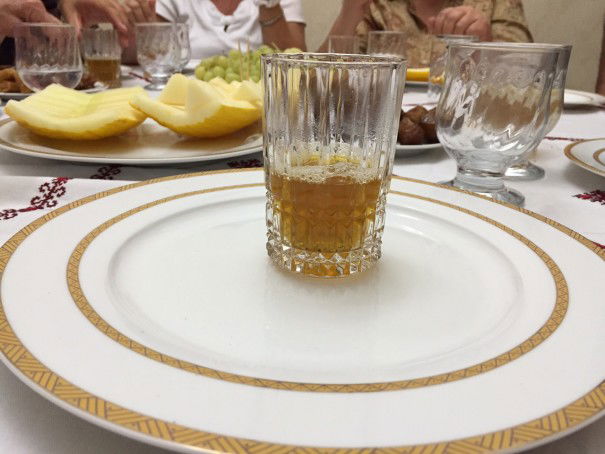
The Universal Ritual of Complete Teenage Indifference

The Universal Ritual of Complete Teenage Indifference
Mint Tea in Fez
“Please. Come in. Come in,” says a smartly-dressed Mr. Hassan.
Mr. Hassan is motioning for a group of tourists to enter the stairwell of his building. On the fourth floor a feast awaits. The tourists have come from the U.S., Australia, Canada, and Italy, and have just finished a startlingly sunny day walking the labyrinth that is Fez’s 9th century medina. They come haggard and hungry.
Mr. Hassan is the patriarch of a five-person family that includes his wife Fatima, daughters Karima and Asma, and son Samir. The children range in ages from 12 to 20, and their dress and interests reflect a generational divide in Morocco. Their mother is dressed very conservatively, rarely leaves the kitchen (probably due to the elaborate dishes she’s preparing), and makes plain her lack of English language skills. The children are dressed in Western-style clothing and spend as much time buried in their mobile phones as conversing with the guests in English, their third language. The scene is a living room filled with teenage indifference and busy parents trying to please their guests. We could be anywhere.
The tourists are presented with Moroccan mint tea to begin the meal. It’s done with pomp and ceremony, and signifies hospitality to guests. This is a practice that has been repeated innumerably in Morocco, supposedly stretching back almost two hundred years, when a former British soldier introduced it to the country. Mr. Hassan does the honors, and refusing the amber liquid is not an option.
The ubiquitous green tea is served with fresh mint and enough sugar to give any sweet tooth their daily fix. The hot tea neatly balances the bold flavor of mint with a chaser of sugar. Typically, the second tea goes down even smoother than the first. It all serves to wash down the savory spit-roasted lamb and bastyla—spiced pies—that are stacked high on a tastefully ornate table set.
Eighteen-year-old Karima patiently explains, in fluent English, the ingredients of the tea while her parents scramble between the kitchen and dinner table. She tells the guests the green tea leaves originate in China, while the mint and sugar are usually sourced locally. The recipe for this drink has been a globalized concoction since the beginning of its existence.
The tea’s preparation varies from region to region in Morocco. In the southern city of Marrakesh, for example, the locals somehow squeeze even more sugar into the drink. How Moroccans take their mint tea is a calling card of where they hail from. The common thread linking regional tastes and customs is that the tea is always consumed slowly, leaving time for conversation.
The children, unlike their father, are not drinking the tea at the same rapid rate as their Western guests. At first, I assume this is the result of living in a culture that prizes drinking the tea slowly. Later, it becomes apparent the tea is more of a prop, as their glasses filled with soda are consumed much more quickly.